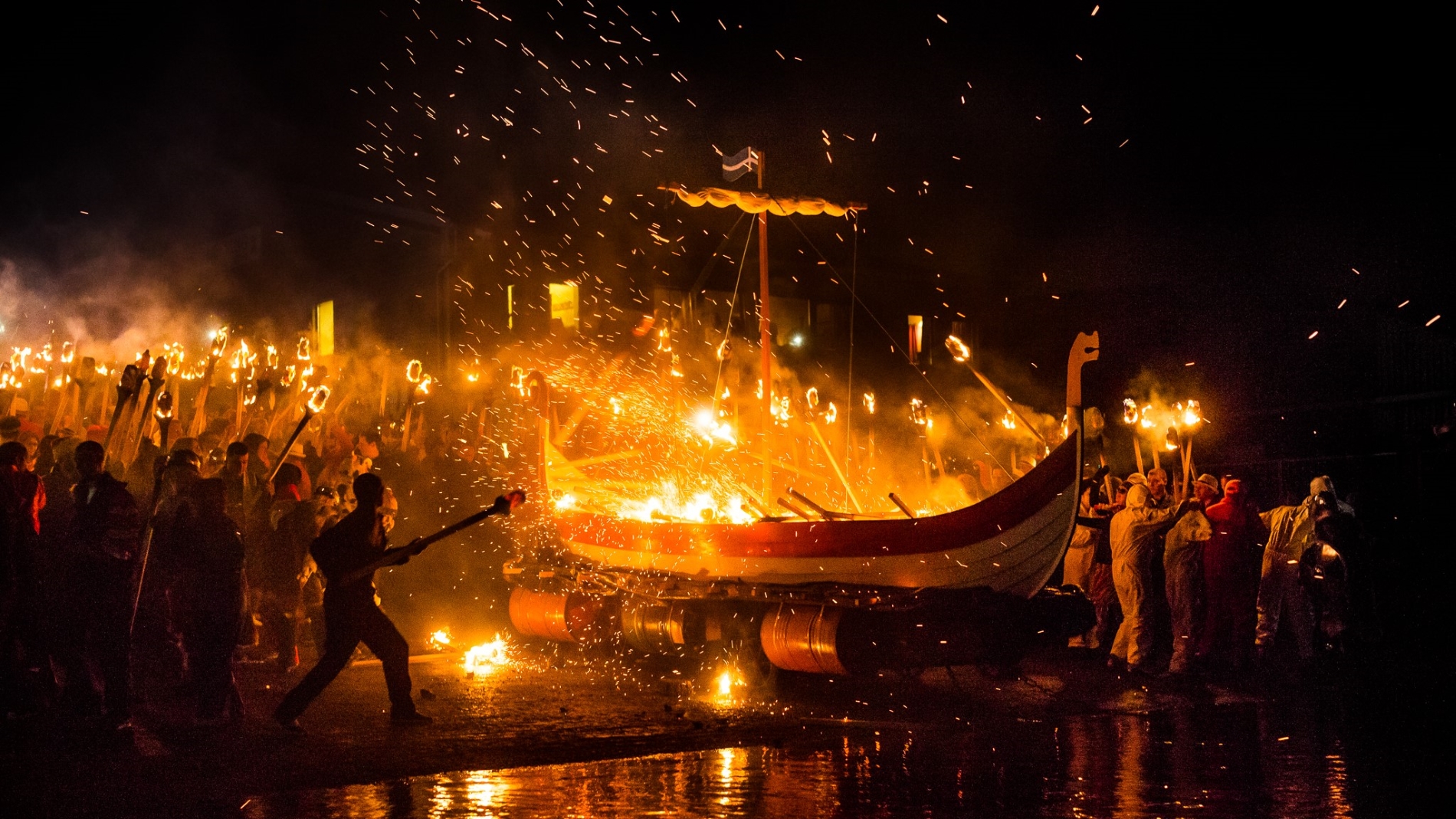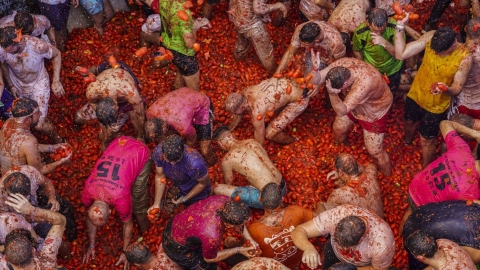Every year on the last Tuesday of January, in the town of Lerwick in the Shetland Islands, Scotland. The Viking bonfire festival, also known as Up Helly Aa festival, attracts thousands of visitors from all over the world to this northernmost corner of Scotland. This is a ceremony to celebrate Scandinavian Viking culture and welcome the return of the sun after a cold winter.
Up Helly Aa is more than just a subarctic holiday. The islanders hold an annual fire festival to remember the Vikings who ruled the area over a thousand years before it became part of Scotland in 1468. The festival is a way for Shetlanders to connect with their roots and celebrate the symbol of strength of the ancient Vikings who survived on the ocean in harsh weather.
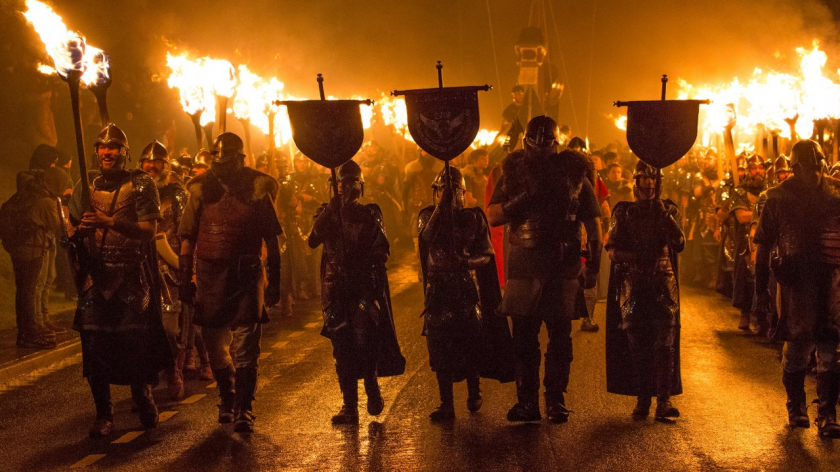
The islanders hold Up Helly Aa every year to commemorate the Vikings who ruled the land over a thousand years ago.
The fire festival will last all day but the evening of Up Helly Aa is always the most attractive part with the torch procession and burning of the Galley, the traditional Viking dragon boat. Tourists will witness the young Vikings wearing sheepskin coats, carrying axes and shields called Guizers. They excitedly gather in the square to receive the torch. And when the flares are shot into the sky, the torches will be lit and the fiery parade will begin. Tourists will admire the extremely impressive scene when the torches flicker through the streets to the heroic drumbeat and the vibrant music of traditional Up Helly Aa songs.
Leading the parade is the Jarl army of more than 1,000 people divided into 46-47 teams. This group of people pulls behind a Galley boat that is restored to a smaller size, about 9 m long. Standing on the stern of the boat is their leader, called a Guizer Jarl. A Guizer Jarl must be over 16 years old, have participated in Up Helly Aa for at least 5 years or more and meet all the conditions to meet the criteria to be elected as a leader.

The festival takes place all day long but the evening of Up Helly Aa is always the most exciting part with the torchlight procession and the burning of the Galley, the traditional Viking boat.
The parade will pull the Galley to the area where the riverbank is being lit on fire. The Galley will be placed in the center and the troops will form a circle around it, holding torches, singing the song Up Helly Aa. And when the flares are fired again, Guizer Jarl will leave the Galley. A requiem horn will be sounded, and all the torches will be thrown into the Galley. In ancient Viking custom, the bravest Viking warriors would be sent to the afterlife on a burning Galley with the hope that the souls of the deceased would reach Valhalla, the place known as the palace of the dead in Old Norse.
To make the boat burning event more impressive, the city's street lights are turned off early. Each time the ceremony is performed, the whole city seems to be ablaze with flames. Once the fire is extinguished, the guizers' lavish night party begins. They carry torches and parade back to the local taverns, dancing and singing until the sun comes up.

Every time the ceremony is performed, the whole city seems to be ablaze with flames.
The Heart of Up Helly Aa
The Shetland Islands are located northeast of Scotland and are part of the United Kingdom. The remote archipelago was once part of Norway until ownership was transferred to Scotland in the 15th century. The area is steeped in Norse heritage, a culture that flourishes most in the town of Lerwick, where streets are named after Viking kings like Harald and Haakon and the local people speak Scandinavian accents.
Shetland people protect their Norse heritage and make themselves part of this culture. Every year, Viking Galleys and over 1,000 torches are prepared by the locals. Throughout the winter, the Shetland Islands are eagerly preparing for this important holiday. The sense of preserving culture is also brought into schools, where children learn about their roots, learn about the festival and make their own helmets and shields.
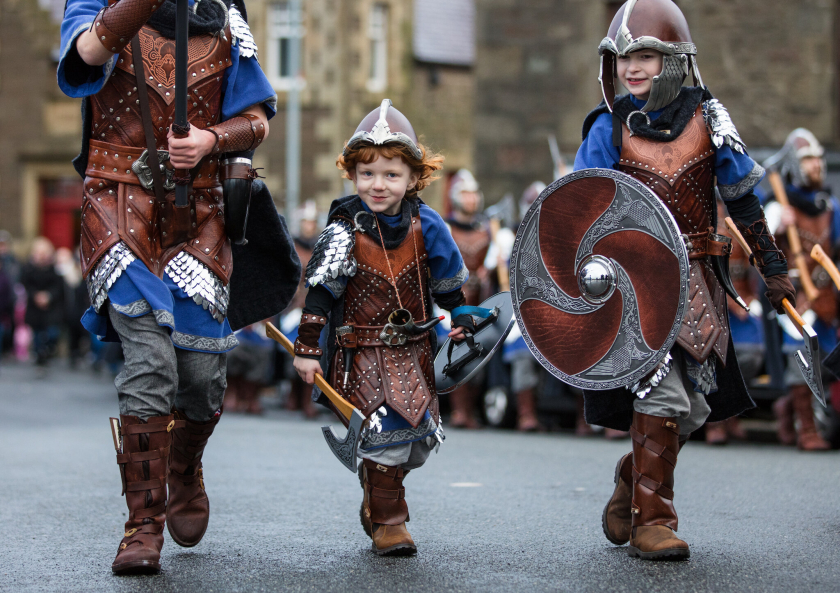
Cultural awareness is also introduced in schools, where children learn about their roots, learn about festivals and make their own helmets and shields.
While Up Helly Aa may have a wild and majestic feel, the spirit of the festival is all about community. During the fire festival, visitors can feel the excitement of the entire Lerwick town as they join in the Jarl Parade. The 1,000-strong Jarl visit local schools, hospitals and health care facilities to bring the festival to those who cannot attend in person.
Gender equality is established
Despite its long-standing tradition, Up Helly Aa is still a men-only festival until 2022, which is considered a controversial old custom. After a long period of consultation and negotiation, in June 2022, the festival committee decided to listen to the majority of people's opinions and allow women to participate in Up Helly Aa in 2023. The women here will form a team, be included in the parade, participate in the torchlight procession, burn the Galley and can completely run to become a Guizer Jarl to lead the troop. For the festival for teenagers, this means that now girls can participate as well as boys.
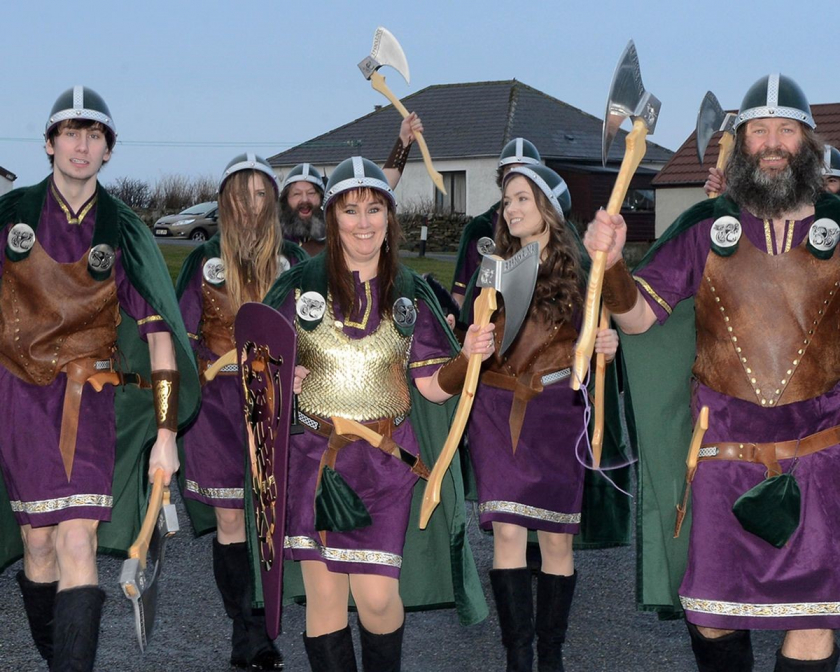
After a long period of consultation and negotiation, in June 2022, the Up Helly Aa committee decided to listen to the majority of people's opinions on women being allowed to participate in Up Helly Aa in 2023.
This is seen as a historic milestone for Up Helly Aa in particular and the Shetland Islands in general. As well as the community being able to benefit from the inclusion and diversity of women participating in cultural and social events, this decision will also help female visitors to Shetland feel safe and welcome in Up Helly Aa.





